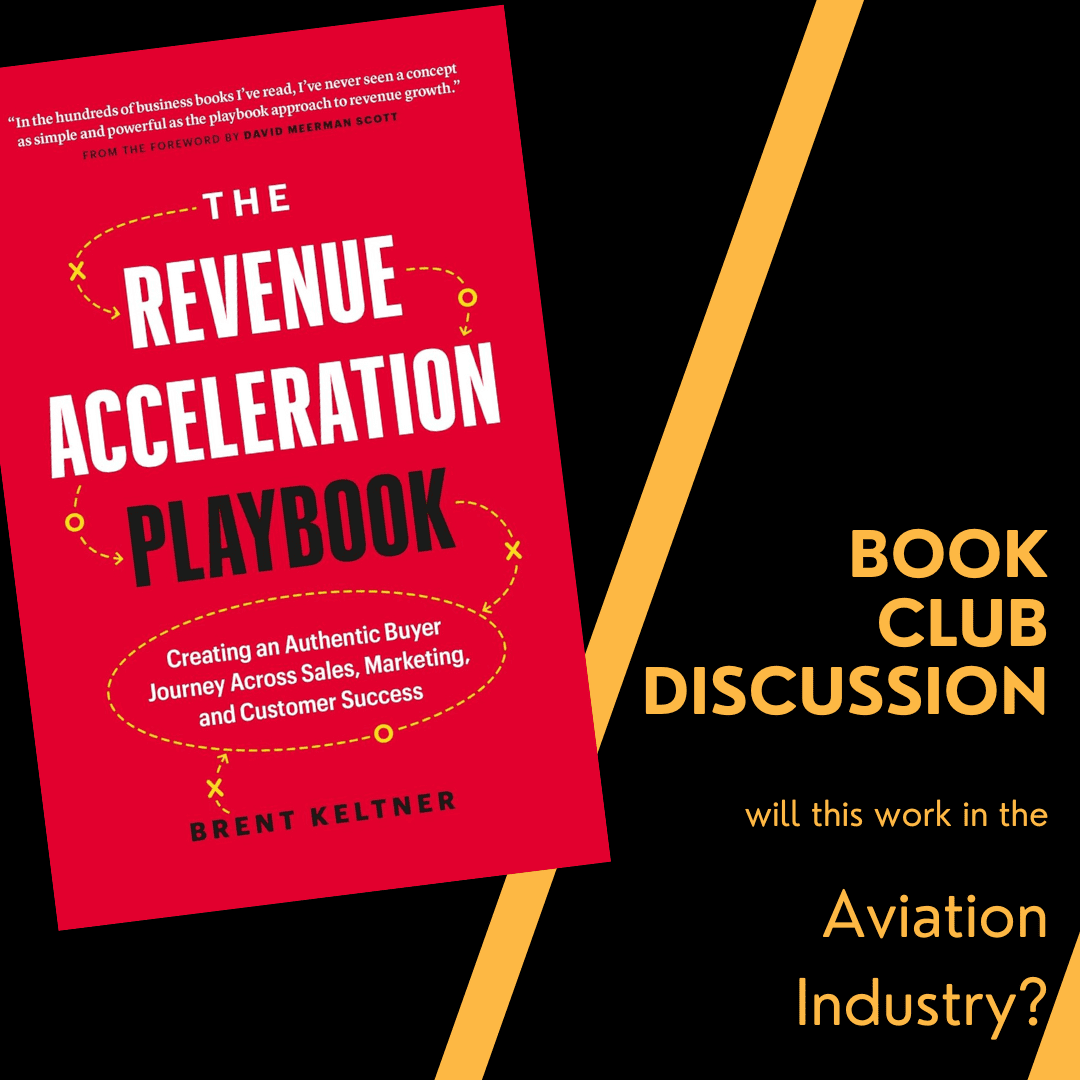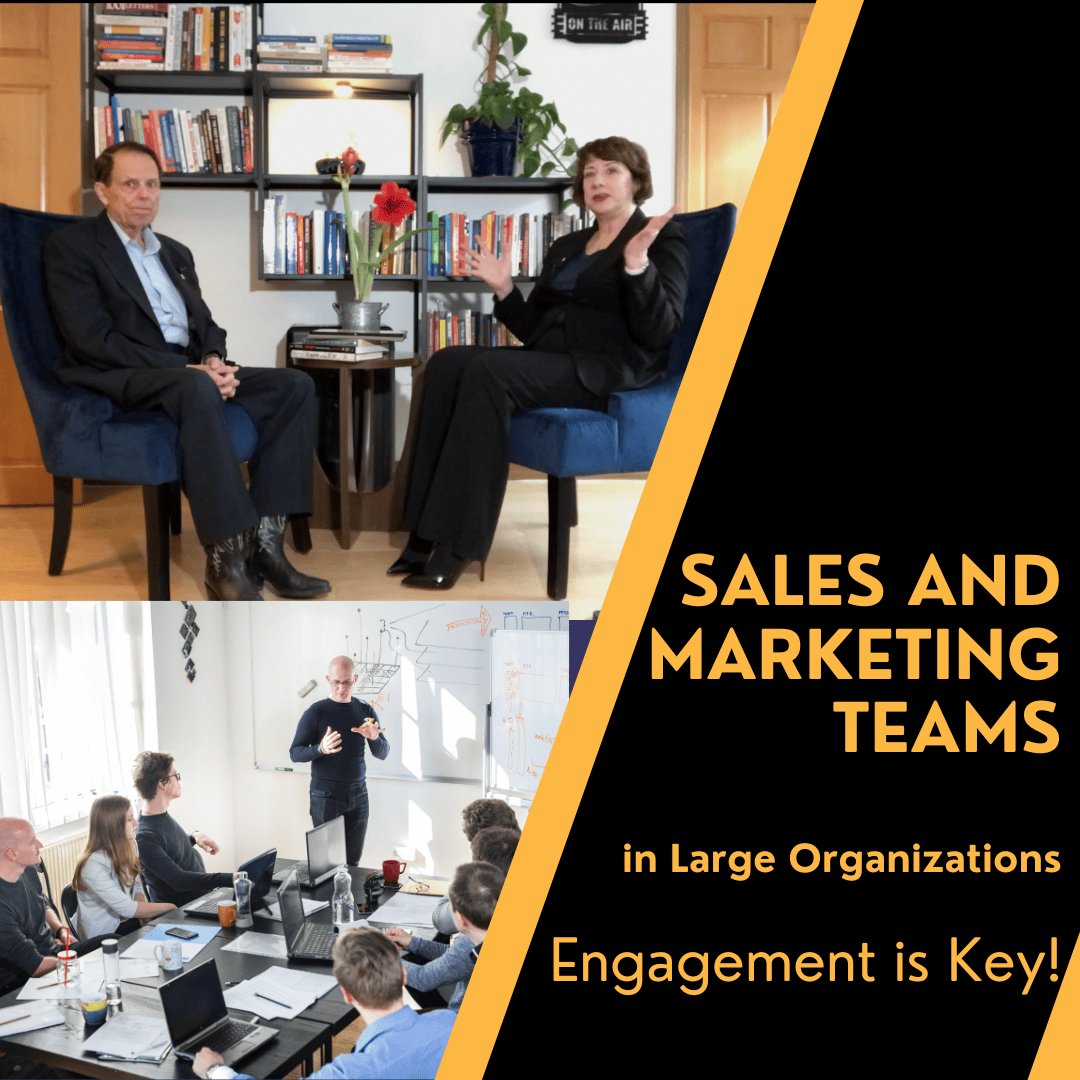 One of the questions people ask us most, is this:
One of the questions people ask us most, is this:
“How can we get more prospects or leads?
We’ve got everything else figured out, but we just need more leads.”
In this episode of aviation marketing Hangar Flying, we tell a cautionary tale of what happens when what the business owner THINKS is the real problem is NOT the real problem.
There’s an old saying that “you never lose, you either win, or you learn.” Well, this incident in 2012 changed the way we do business.
We definitely learned something!
Transcript
Narrator: You’re listening to aviation marketing Hangar Flying. The community for the best sales and marketing professionals in the aviation industry. Your hosts John and Paula Williams are your sales and marketing test pilots. They take the risks for you, ensure strategies, relevant examples, hacks, and how tos. Be sure to subscribe on iTunes so you won’t miss a thing.
Paula Williams: Welcome to aviation marketing Hangar Flying episode number 16, why you may not need more leads.
John Williams: Of course.
Paula Williams: [LAUGH] It’s funny because everybody, when we talk about marketing, usually the first thing that people tell us is, we need more leads. That’s the one problem that we have in our marketing system is, if we only had more leads, all of our problems would be solved.
But we’re going to tell you about one of our most frustrating marketing puzzles and one of two times that we fired clients. [LAUGH] And this actually is one of those things that sometimes happens and we had to learn from in order to really get our system down. So we’re going to talk about what happened and what we do now so that that will never happen again, right?
John Williams: Of course.
Paula Williams: Of course, okay. So I’m Paula Williams.
John Williams: And I am John Williams.
Paula Williams: And we are ABCI, and ABCI’s mission is-
John Williams: To help all you ladies and gentlemen out there sell more aviation products and services.
Paula Williams: Exactly. All right, so for the last four episodes of our podcasts, we’ve been talking about phase one, which is advertising and prospecting.
Which is very important to do. And today we’re going to talk about what went wrong in one of our campaigns, or one of our client engagements, when things went very badly in phase one, which led to some other issues in phase two that we’re going to be talking about in the next several episodes.
So we’re just kind of transitioning from phase one to phase two. And this is one of the points at which things tend to blow up if we don’t prevent it, right? Okay, so in this situation, we have a marketing system where we’re acquiring leads for a client by using search engine optimization, SEO, and other methods.
And then people are downloading an ebook, and from that point then their sales person is making sales calls because this is a complex product. It’s a very high touch, high risk product that needs more explanation than can be done on paper. So you can get so far with credibility using electronic and paper materials, but at some point you have to talk to somebody, right?
John Williams: Yeah, preferably face to face but at least on the phone.
Paula Williams: Right, exactly. So, when we designed this marketing system with this client, it was actually a really great process. They were really great to work with. They agreed in principle with us that, yes, this is what needs to happen.
They had a great sales guy who was a friend of the owner of the company. He knew a lot about the product. He knew a lot about how to respond to questions and answer questions and everything else. He’d been in the business for a really long time. So we thought okay, well this guy knows sales.
We know marketing. We don’t need to get into his stuff. He doesn’t need to get into our stuff. We just very neatly throw things over the fence and everything will go just great, right?
John Williams: Except for one small thing.
Paula Williams: Right, which we’re not going to give away.
[LAUGH] I know you know the answer John, but this is supposed to be a suspenseful story, so.John Williams: Uh-huh.
Paula Williams: Uh-huh, okay.
John Williams: Well, I’m supposed to have a cup of coffee first.
Paula Williams: [LAUGH] Exactly. Okay, so now we know the setup. You know, we have everything that we need, we think.
Things are going along swimmingly, we set up our system. The search engine optimization is starting to kick in. The social media, we’re starting to get more pick-ups on that. People are actually finding the ebook, and they’re downloading it, and life is good, right?
John Williams: And what does swimmingly mean?
Paula Williams: Swimmingly means good, I think.
John Williams: [LAUGH]
Paula Williams: Right? Okay, so 44 people downloaded the ebook in July, and we’re thinking we’re doing a fantastic job. So, we met with this client every month and we talked about, here’s what went well, here’s what could go better, and so on.
So we got together with them after July, so about the first week of August, and had a meeting. And they had made no more sales than they had the month before. Probably four or five sales. So what’s the problem? I mean, we sit there and go through, they said we got all these leads, but they’re really no good.
And I’m like okay, well do we need to make the form that they use, that they fill out when they download the leads, do we need to make that more detailed? We added a couple of questions to that form. We thought okay, well you’re getting some unqualified leads.
That’s to be expected. And so we made it a little bit harder to get the ebook. No problem. Continued our search engine optimization, continued our social media, continued the other things that we were doing. We also did some post cards and other things. So we upped our game in marketing and got 57 ebooks downloaded in August.
John Williams: So as far as we know they’re qualified leads.
Paula Williams: Yeah, and still four or five sales in August. So the next month we had the same meeting, pretty much the same thing happened. We just assumed that everything was going swimmingly. [LAUGH] We already talked about what swimmingly means.
On the other side of the fence, and so we’re just feeding in leads and finding out that nothing is happening. Nothing more is happening than there was before. All right, so we upped our game some more. We’re working our butts off at this point, right, and doing a whole bunch of new articles, and everything else.
Doing a lot of work on the on the end of getting people to this ebook and selling this ebook. So 92 people downloaded this ebook in September. Met with them the first week of October and still, four or five sales, so. We came down to it, and we said, okay, well let’s really dive into this.
And the fact that this had not occurred to me before this really shows my assumption [LAUGH] that everybody in the organization is doing their job. And, of course, I also didn’t want to upset the apple cart, because the person who was supposedly doing the sales calls was also a friend of the owner.
There are lots of things going on here. He was somebody that I really respected, had talked to quite a bit and thought that this was something that he knew. I sure as heck didn’t want to tell him how to do his job, you know. But as it turned out, he wasn’t making any of the calls.
And the way that we drilled down to this was like, okay, well, let’s talk about some of these leads. Let’s break down ten of these leads that we can just call and find out what happened, so that I can call them and find out, so was it something in the ebook?
Was it just not interested in the program but wanted the ebook for some other reason? What’s the reason for this? So give me ten leads that you talked to that I can follow up with. And he said, well, I really can’t do that. And I’m like, okay, well, can you give me one?
No, I really can’t do that. Well why not? Well, I made a couple of calls in July, but they didn’t really pan out, so I just assumed that this is a waste of time. And we talked about this and he actually had been dishonest in these meetings to our face, which led us to a situation where we really had to have a heart-to-heart with the whole company and say, you know what, we really cannot be doing this.
I mean we can’t be getting bad results. We can’t have a situation where we are expecting that certain things are going to be done and they’re not. And honestly it comes down to theft, don’t you think, John?
John Williams: Well, whatever, it makes us look bad, because you would think on the surface that we haven’t done our job when in fact they haven’t been making the sales calls.
They haven’t followed up on the leads they got.
Paula Williams: Exactly, and in my opinion, the reason I say theft is because they had spent thousands of dollars on the ebook and on prospecting activities. And our time and everything else, and that amounted to nothing. And three months later, these leads are going to be stale.
So if somebody says that they are doing something, and it turns out that they are not, that is not just dishonesty. That is also theft of opportunity, right? This was one of those times when we really learned a lot. And you can say that you never lose, you either win or you learn.
[LAUGH] So we didn’t chalk this up as a loss. We chalked this up as a learning experience. So there are some intersections between sales and marketing that are really, really critical. And it’s not always the salesperson’s fault if they are not making calls, or whatever happens. Because we didn’t have a system in place to verify what was being done.We just said, put your notes into the CRM, and everything else. But no notes were getting in there. We assumed that he was making calls but just not getting ahold of people, or just not having a favorable response. What we needed to change about the system was every single time the phone rang or every time he made a call, there should’ve been a notation in the CRM.
So, we really needed to put a system in place to make sure that that happened. And so those accountability systems are really part of the marketing process.
Paula Williams: Is a lot harder than most people assume. And people think this is an exaggeration, but it really isn’t, and in the aviation industry it’s even worse.
It takes more than 5 to 12 contacts to make sale, which is the industry average. In some cases for very high [INAUDIBLE] or complex products, it can take years to make a sale. When you go back and look at the marketing textbooks, they talk about positioning products. People don’t buy a product or service.
They’re really looking for a solution to a problem that they’re having. So when people hire ABCI, it’s not because they want a brochure, or a website, or a trade show handled. What they’re looking for is to make more sales. So we had to go back, this was in 2012 that this whole story happened, and look at our products and services and say, how can we make it more likely that people that use our products and services will make more sales?
And the only way to do it is to involve the whole team, sales and marketing. And make sure that we have got really good education going on, really good team building going on. And really good accountability systems being put in place and being bought into by the whole team before we end up in a conflict situation where we’re actually accusing somebody of being dishonest.
It doesn’t have to get to that point. We can really make sure that everybody’s on board and working together before we get started. And that’s why we put together the aviation marketing Master Class. We involved Mike Ryan, Mark Leeper, Mike Nicholson at Sandler Sales. We got involved with their President’s Club sales training program, and a lot of other things to make sure that we were integrating all of those pieces.
So that we’re offering a complete solution, and not just marketing services but actually getting to the heart of why people hire us. Whatever is going to close, then you have a better way of forecasting your revenue and everything else, right?
John Williams: Yes.
Paula Williams: So a lot of new clients come to us and say they need more leads when they really don’t.
They really don’t have much of an idea of what’s happening to the leads that they’re getting now. And until we know the problem is or where that process goes astray, we’re not going to help them make more sales by getting more leads. We have another problem that we need to fix.
Okay, so upcoming podcasts. This was episode 16, talking about our [LAUGH] frustrating cautionary tale, right? So episode 17 we’re going to talk about qualifying prospects. Episode 18 we’re going to talk about selling to large organizations and infiltrating a corporate structure. Episode 19 we’re going to talk about interactive sales presentations and how to make those really effective.
So there is no new tip sheet this week, but we still have the 17 Great Calls to Action available. If you go to aviationbusinessconsultants.com/ctas, you can download that, and it has a number of different calls to action, including tips sheets, ebooks, videos, other things that you can do to get more leads, right?
Okay, subscribe to our podcast on iTunes. And please do leave us a rating. Again, this is a fairly new podcast. We are almost to 1,000 downloads.
John Williams: Wow.
Paula Williams: So tell your friends. Bring any colleagues or anybody else that you think could benefit from aviation marketing Hangar Flying and let them know, and get them to subscribe and leave us a rating as well.
Thanks for joining us.
John Williams: And we’ll see you next time.
[MUSIC]document.currentScript.parentNode.insertBefore(s, document.currentScript);..





Leave A Comment